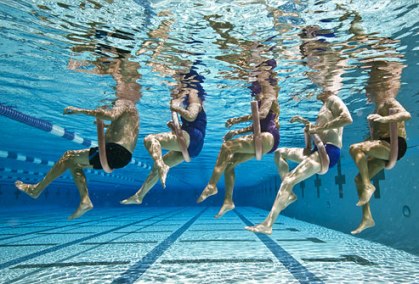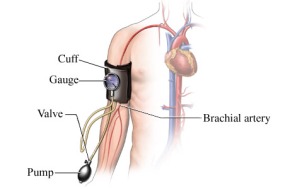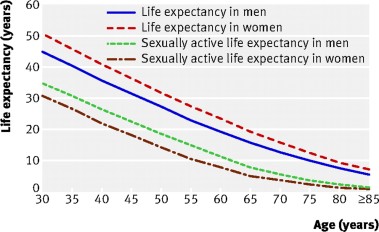What are the benefits of yoga? How does the daily discipline of yoga affect the body, mind and spirit?

30 Yoga Benefits
What is the History of Yoga?
Yoga is a holistic health and wellness activity that both relaxes and energizes the body. Yoga is a Sanskrit word meaning “union with God.” The common belief that Yoga derives from Hinduism is a misconception. Yoga actually predates Hinduism by many centuries. Ancient archeological finds discovered the Indus Valley provided unquestionable evidence that Yoga was practiced earlier than 3,000 B.C.E. and the classical techniques of Yoga may date back to more than 5,000 years. The word Yoga means “to join or yoke together,” and it brings the body and mind together in harmony with one another. The whole system of Yoga is built on three main structures: exercise, breathing, and meditation. One of the earliest texts on Yoga is believed to have been compiled by a scholar named Patanjali. This book contains Yoga theories and practices and is entitled Yoga Sutras (“Yoga Aphorisms”) and is thought to have been written as early as the 1st or 2nd century B.C. or as late as the 5th century A.D. This system is known as “Ashtanga Yoga.” This is the eight limbs of Yoga, and referred to today as Classical Yoga. Most all forms of yoga include a variation of Patanjali’s original ancient yoga system.
What are the Different Types of Yoga?
There are over a hundred different schools of Yoga. There are many Yoga poses or postures within each of the different schools of Yoga.
 Some of the most well known schools of Yoga are as follows:
Some of the most well known schools of Yoga are as follows:
- Hatha Yoga – Hatha Yoga is the most widely practiced form of yoga in the United States. It is the branch of yoga which concentrates on physical health and mental well-being using exercises and breathing control. “Ha” can be translated to mean “sun” and “tha” to mean “moon” meaning to balance the opposite forces.
- Raja Yoga – Raja Yoga means the “King” of Yoga, or the royal path. It is a form of Hindu yoga intended to achieve control over the mind and emotions.
- Jnana Yoga – Jñāna yoga or “path of knowledge” is one of the types of yoga mentioned in Hindu philosophies. Jñāna is a Sanskrit word translated to mean “knowledge”.
- Bhakti Yoga – Bhakti yoga is a spiritual path described in Hindu philosophy as focused on love of, faith in, and surrender to God. It is a means to awaken to God consciousness. It is a selfless devotion of reaching Brahman (God) in loving service.
- Karma Yoga – Karma Yoga is selfless action to reach perfection. “Karma” is a Sanskrit term meaning “action” or deed, either physical or mental. What makes a Karma Yogi is first the experience of union with God, and then selfless action.
- Tantra Yoga – Tantra yoga is a type of yoga designed to awaken the kundalini energy in the body and addressing relationships and sexuality. In Hinduism, the word Tantra means: 1) weaving and 2) the sacred scriptures of Hinduism, presented as a dialogue between Shiva and Shakti
- Kashmir Shaivism Yoga – Kashmir Shaivism is a transformative non-dual, yogic philosophy that originated in Kashmir in the ninth century. The goal of Kashmir Shaivism is to merge in Shiva or Universal Consciousness, or realize one’s already existing identity with Shiva, by means of wisdom, yoga and grace.
 What Does Research Tell Us About the Effectiveness of Yoga?
What Does Research Tell Us About the Effectiveness of Yoga?
Sudarshan Kriya Yoga was concluded to be a potentially effective treatment in reducing or eliminating depression in a study by Janakiramaiah N and others (2000) and a review of clinical studies of the effectiveness of Hatha Yoga on depression by Uebelacker et al (2010).
The practice of yoga has been shown to be therapeutically useful in bronchial asthma. Nagarathna R, Nagendra HR (1985) concluded that “There was a significantly greater improvement in the group who practised yoga in the weekly number of attacks of asthma, scores for drug treatment, and peak flow rate.” However, a 2011 systematic review of clinical studies suggests that there is no sound evidence that yoga improves asthma.
 Multiple studies have found yoga to be a helpful treatment in low back pain such as Sherman KJ, Cherkin DC, Wellman RD, et al (2011) and Tilbrook HE, Cox H, Hewitt CE, et al. (2011). Other studies have shown yoga to be potentially helpful treatment for cardiovascular disease, such as Raub (2002), type II diabetes mellitus (Innes and Vincent, 2007), stress and hypertension (Kiecolt-Glaser JK, and others, 2010) as well as other conditions. The practice of yoga can also play a role in the rehabilitation of those who have physical and mental challenges (Uma, et al, 2008). Many other benefits are inherit in the practice of yoga as described below.
Multiple studies have found yoga to be a helpful treatment in low back pain such as Sherman KJ, Cherkin DC, Wellman RD, et al (2011) and Tilbrook HE, Cox H, Hewitt CE, et al. (2011). Other studies have shown yoga to be potentially helpful treatment for cardiovascular disease, such as Raub (2002), type II diabetes mellitus (Innes and Vincent, 2007), stress and hypertension (Kiecolt-Glaser JK, and others, 2010) as well as other conditions. The practice of yoga can also play a role in the rehabilitation of those who have physical and mental challenges (Uma, et al, 2008). Many other benefits are inherit in the practice of yoga as described below.
What Are the 30 Benefits of Yoga?
- Relieves Stress
- Improves Breathing
- Eases Pain
- Improves Circulation
- Increases Strength
- Increases Endurance
- Lowers Heart Rate
- Develops Inner Peace
- Lengthens Muscles
- Increases Flexibility

- Reduces Cortisol Level
- Improves Concentration
- Increases Range of Motion
- Dissolves Ego
- Develops Compassion
- Enhances Energy
- Heals Ailments
- Fosters Joy
- Lowers Weight
- Lubricates Joints
- Detoxes the Body

- Strengthens Abdomen
- Improves Memory
- Delays Wrinkles and Aging
- Burns Fat
- Improves Posture
- Improves Metabolism
- Builds Immune System
- Improves Balance
- Brings Harmony
Have you tried yoga? If so, how has it helped YOU? Best wishes for a yoga-riffic day!!
_______________________________
References
Bower JE, Woolery A, Sternlieb B, et al. Yoga for cancer patients and survivors. Cancer Control. 2005;12(3):165–171.
Innes, KE, Vincent HK, The Influence of Yoga-Based Programs on Risk Profiles in Adults with Type 2 Diabetes Mellitus: A Systematic Review, Evid Based Complement Alternat Med., Dec 2007; 4(4): 469–486.
Jain SC, Talukdar B. Bronchial asthma and Yoga. Singapore Med J 1993;34:306-308
Janakiramaiah N. , Gangadhar B.N. , Naga Venkatesha Murthy P.J. , Harish M.G., Subbakrishna, D.K., Vedamurthachar A. Antidepressant efficacy of Sudarshan Kriya Yoga (SKY) in melancholia: a randomized comparison with electroconvulsive therapy (ECT) and imipramine Volume 57, Issue 1 , Pages 255-259, January 2000
Kiecolt-Glaser JK, Christian L, Preston H, et al. Stress, inflammation, and yoga practice. Psychosomatic Medicine. 2010;72(2):113–121.
Monro R, Power J, Coumar A, Nagarathna R, Dandona P. Original research yoga therapy for NIDDM; A controlled trial. Complem Med J 1992;6:66-68.
Nagarathna R, Nagendra HR. Yoga for bronchial asthma; A controlled study. Br Med J 1985;291:1077-1079.
Ramesh L. Bijlani, Rama P. Vempati, Raj K. Yadav, Rooma Basu Ray, Vani Gupta, Ratna Sharma, Nalin Mehta, and Sushil C. Mahapatra. A Brief but Comprehensive Lifestyle Education Program Based on Yoga Reduces Risk Factors for Cardiovascular Disease and Diabetes Mellitus The Journal of Alternative and Complementary Medicine. April 2005, 11(2): 267-274. doi:10.1089/acm.2005.11.267.
Raub, JA. Psychophysiologic effects of hatha yoga on musculoskeletal and cardiopulmonary function: a literature review. The Journal of Alternative and Complementary Medicine. 2002;8(6):797–812.
Sherman KJ, Cherkin DC, Wellman RD, et al. A randomized trial comparing yoga, stretching, and a self-care book for chronic low back pain. Archives of Internal Medicine. 2011;171(22):2019–2026.
Telles S, Naveen K V. Yoga for rehabilitation : An overview, Vivekananda Kendra Yoga Research Foundation, No. 19, K.G. Nagar, Bangalore-560 019., India, Indian J Med Sci 1997;51:123-7Monro R, Power J, Coumar A, Nagarathna R, Dandona P. Original research yoga therapy for NIDDM; A controlled trial. Complem Med J 1992;6:66-68.
Tilbrook HE, Cox H, Hewitt CE, et al. Yoga for chronic low back pain: a randomized trial. Annals of Internal Medicine. 2011;155(9):569–578.
Uebelacker LA, Epstein-Lubow G, Gaudiano BA, et al. Hatha yoga for depression: a critical review of the evidence for efficacy, plausible mechanisms of action, and directions for future research. Journal of Psychiatric Practice. 2010; 16(1):22–33.
Uma K, Nagendra HR, Nagarathna R., Vaidehi S, and Seethalakshmi R., The integrated approach of yoga: a therapeutic tool for mentally retarded children: a one-year controlled study, Journal of Intellectual Disability Research, Vol 33, Issue 5, 28 JUN 2008, DOI: 10.1111/ j.1365-2788.1989.tb01496
_________________________________
 This article is written by Jean Voice Dart, M.S. Special Education from Illinois State University. Jean is a published author and has written hundreds of health articles as well as hosting a local television program, “Making Miracles Happen.” She is a Registered Music Therapist, Sound Therapist, and Master Level Energetic Teacher, and is the Executive Director, founder and Health and Wellness Educator of the Monterey Bay Holistic Alliance. The Monterey Bay Holistic Alliance is a registered 501 (c) 3 nonprofit health and wellness education organization. For more information about the Monterey Bay Holistic Alliance contact us or visit our website at www.montereybayholistic.com.
This article is written by Jean Voice Dart, M.S. Special Education from Illinois State University. Jean is a published author and has written hundreds of health articles as well as hosting a local television program, “Making Miracles Happen.” She is a Registered Music Therapist, Sound Therapist, and Master Level Energetic Teacher, and is the Executive Director, founder and Health and Wellness Educator of the Monterey Bay Holistic Alliance. The Monterey Bay Holistic Alliance is a registered 501 (c) 3 nonprofit health and wellness education organization. For more information about the Monterey Bay Holistic Alliance contact us or visit our website at www.montereybayholistic.com.
Disclaimer: The Monterey Bay Holistic Alliance is a charitable, independent registered nonprofit 501(c)3 organization and does not endorse any particular products or practices. We exist as an educational organization dedicated to providing free access to health education resources, products and services. Claims and statements herein are for informational purposes only and have not been evaluated by the Food and Drug Administration. The statements about organizations, practitioners, methods of treatment, and products listed on this website are not meant to diagnose, treat, cure, or prevent any disease. This information is intended for educational purposes only. The MBHA strongly recommends that you seek out your trusted medical doctor or practitioner for diagnosis and treatment of any existing health condition.
0.000000
0.000000




 Do you suffer from indigestion, stomach ache, gas, bloating, irritable bowel syndrome, hemorrhoids, constipation, diarrhea, nausea, acid reflux, or other digestive disorders? Do you avoid restaurants or eating with friends? Are you looking for natural, simple solutions to improve digestion? Here are eight great tips!
Do you suffer from indigestion, stomach ache, gas, bloating, irritable bowel syndrome, hemorrhoids, constipation, diarrhea, nausea, acid reflux, or other digestive disorders? Do you avoid restaurants or eating with friends? Are you looking for natural, simple solutions to improve digestion? Here are eight great tips! 





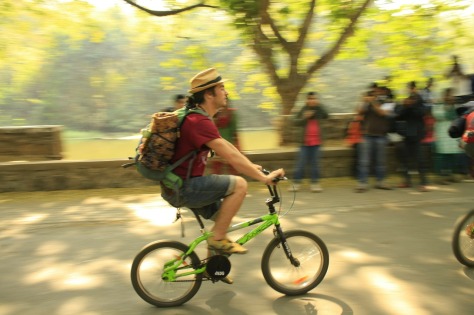


 is written by Hang Pham. Hang Pham is a Monterey Bay Holistic Alliance Health and Wellness Educator. Hang Pham was born in Hoc Mon, Vietnam. She came to America in 1994, becoming a U.S. citizen in 2011. Hang graduated from Seaside High School with diploma and received her AA in General Studies from Monterey Peninsula College in 2011. She received her BA in Collaborative Health and Human Services from California State University Monterey Bay (CSUMB) in 2012. In addition to working as a volunteer staff with the
is written by Hang Pham. Hang Pham is a Monterey Bay Holistic Alliance Health and Wellness Educator. Hang Pham was born in Hoc Mon, Vietnam. She came to America in 1994, becoming a U.S. citizen in 2011. Hang graduated from Seaside High School with diploma and received her AA in General Studies from Monterey Peninsula College in 2011. She received her BA in Collaborative Health and Human Services from California State University Monterey Bay (CSUMB) in 2012. In addition to working as a volunteer staff with the 
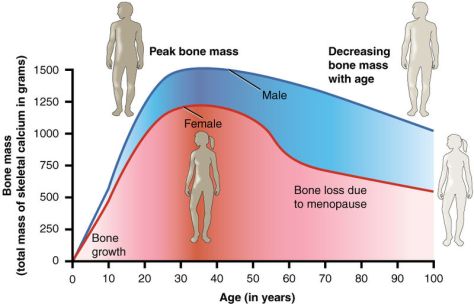 By 2020, half of Americans over 50 are expected to have low bone density or osteoporosis. A woman’s risk of breaking a hip is equal to her risk of developing breast, uterine and ovarian cancer combined.
By 2020, half of Americans over 50 are expected to have low bone density or osteoporosis. A woman’s risk of breaking a hip is equal to her risk of developing breast, uterine and ovarian cancer combined.



